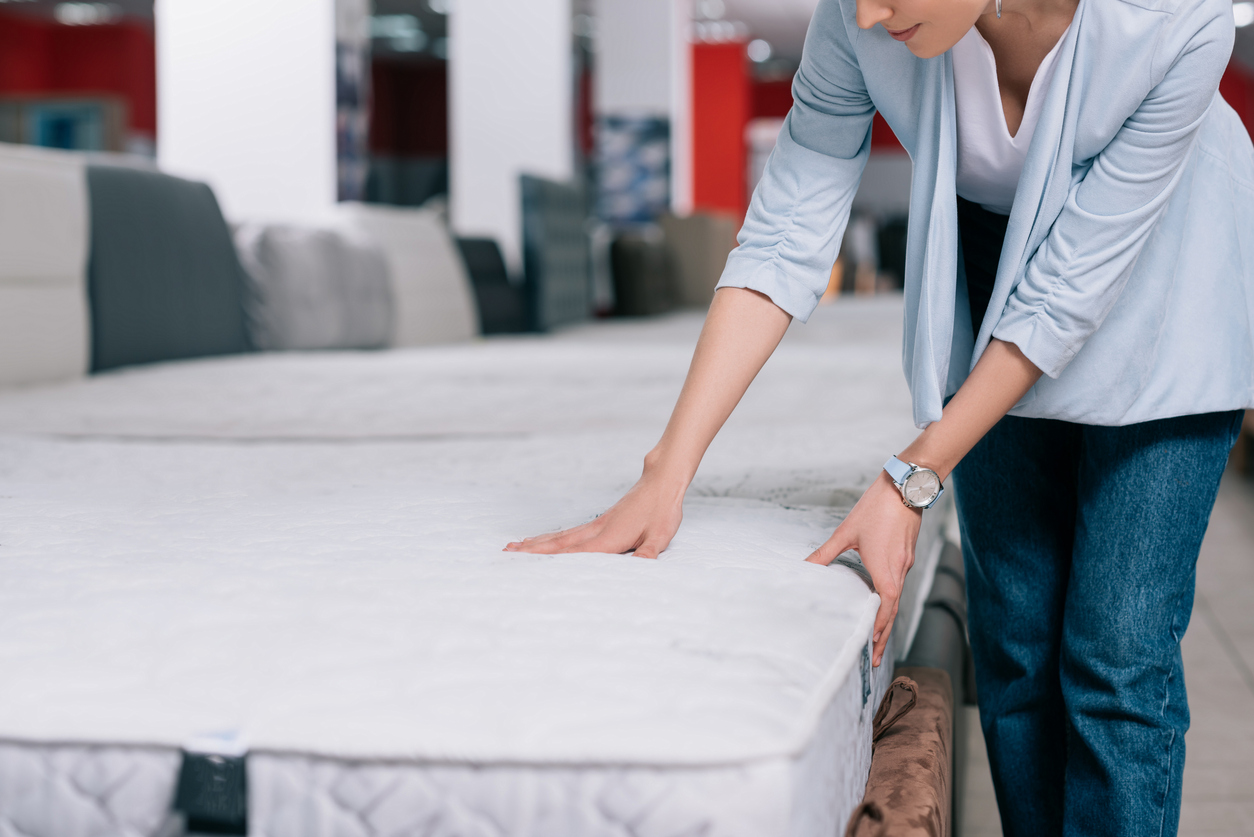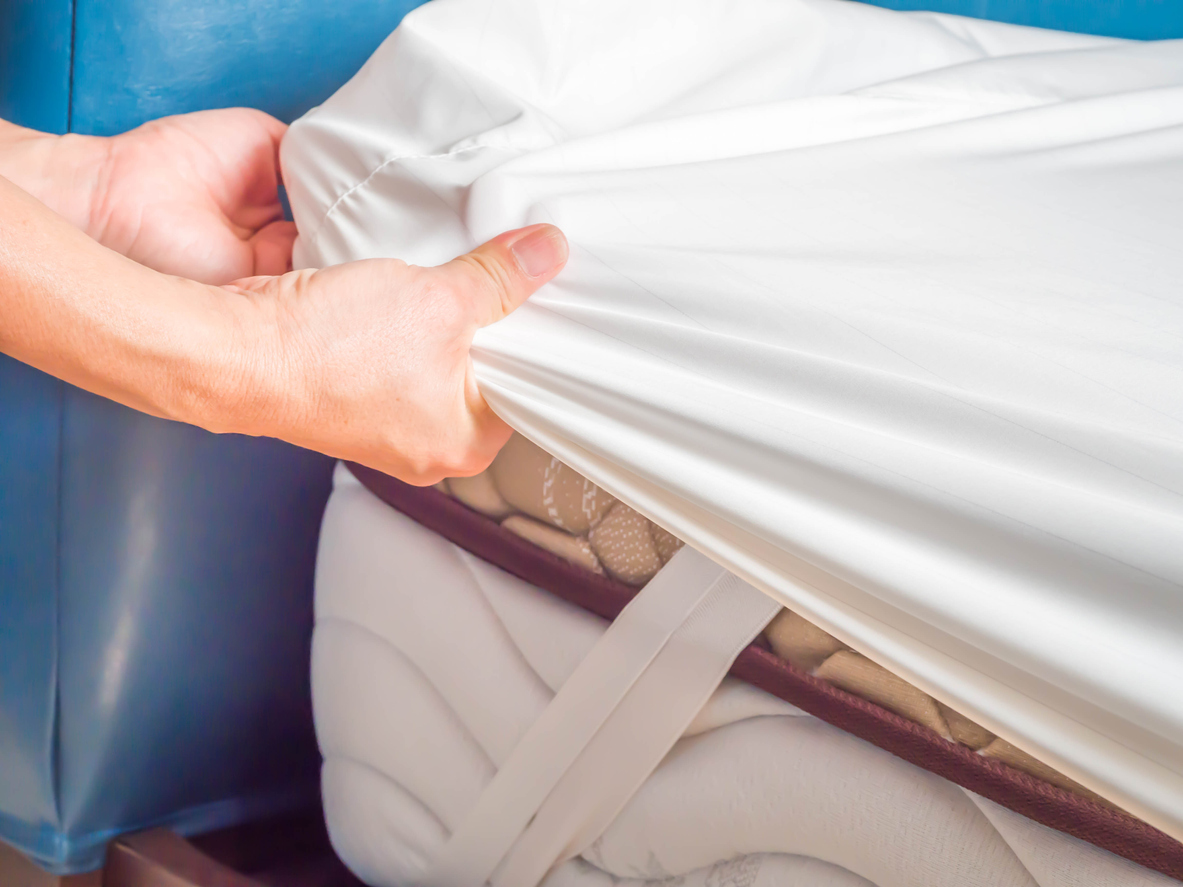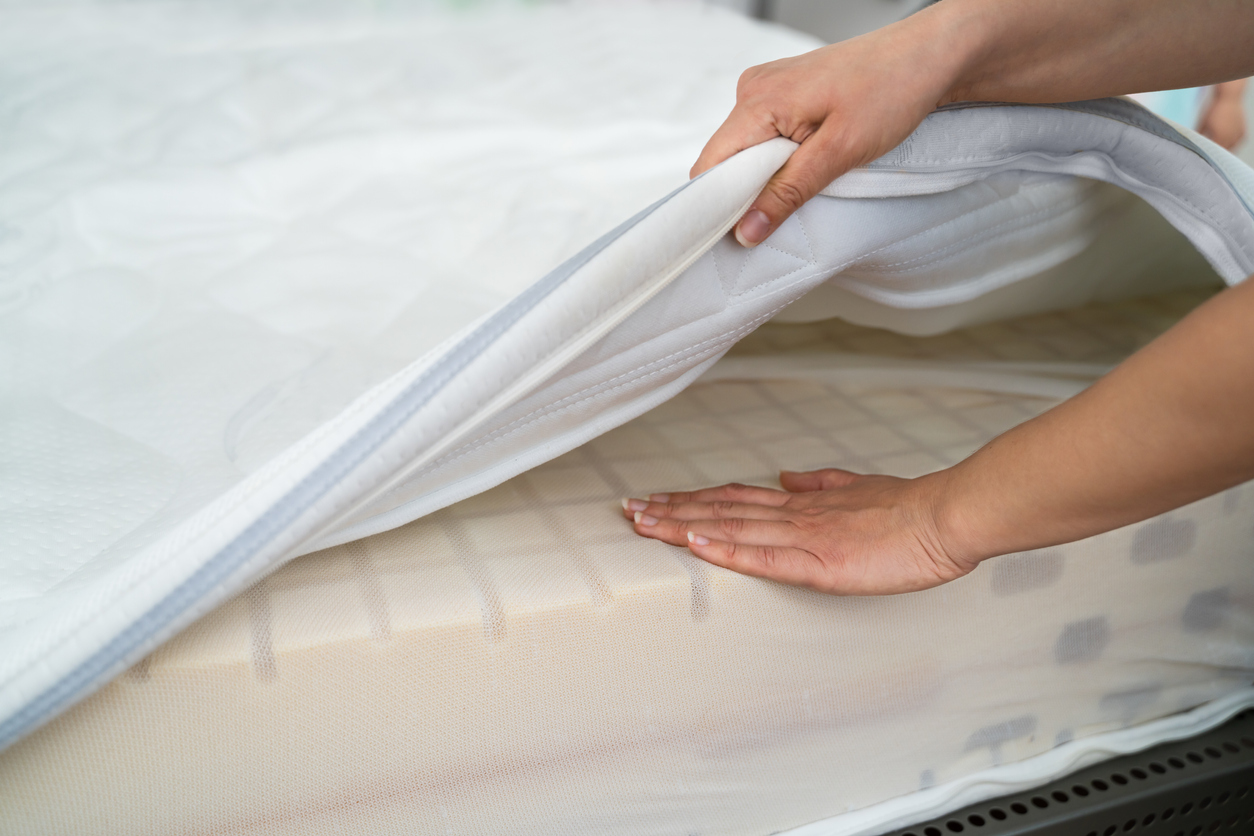We may earn revenue from the products available on this page and participate in affiliate programs. Learn More ›
Q: Is it true that you should replace your mattress every 8 years?
A: The 8-year rule of thumb is generally cited by the mattress industry, but it certainly is not the final word on how often you should replace your mattress. Mattresses don’t come with firm expiration dates, and many factors impact the longevity of a mattress, including the materials used, the quality of the initial construction, the number and weight of the sleepers using the mattress, their typical sleeping positions, and how well the mattress has been cleaned and maintained.
A 2009 study published in the Journal of Chiropractic Medicine may offer some support for the 8-year figure. It found that “participants’ sleep quality significantly improved with the replacement of the old sleeping surface…. [T]he participants’ beds averaged more than 9 years old, suggesting that they had spent an average 3 years in their beds. It is highly plausible that although mattresses and bedding surfaces are accompanied by extended warranties, the life of the support, structure, and comfort of the mattress as it relates to sleep quality may be considerably less than commonly assumed.”
One of the biggest factors impacting longevity is the type of mattress you own and the quality of the original construction. Mattresses made of low-quality components tend to wear out faster than mattresses made of high-quality materials. Also, different types of mattresses have different expected lifespans: A typical innerspring mattress lasts 5 to 8 years; memory-foam, conventional foam, and hybrid mattresses generally last 6 to 8 years; air mattresses usually last 6 to 8 years; and latex mattresses last 8 to 12 years.
But the average lifespan is just that: an average. The calendar doesn’t determine when you should replace your mattress—you do. To maximize its lifespan, you should pair your mattress with the correct foundation; invest in a good-quality mattress protector; regularly clean and maintain your mattress according to the manufacturer’s recommendations; and inspect it every 6 months for signs of wear and tear. Pay attention to any signs of deterioration, including noisy or broken springs; noticeable sagging or lumpy areas; and, most especially, the quality of your sleep: If you consistently wake up tired or sore, or if you don’t feel rested in the morning, it may be time to replace your mattress. In general, as your mattress ages, be on the lookout for the following red flags that signal that it’s time to go mattress shopping.
RELATED: 9 Ways You’re Ruining Your Mattress
Replace when you notice signs of wear and tear.
Obvious signs of wear and tear are a good indication that you should replace your mattress. This includes broken springs poking out of the top or side of the mattress; rips, tears, or holes in the mattress covering; crumbling or cracking foam; and holes or leaks in an air mattress.

Replace if you start having allergies or problems related to asthma.
An increase in symptoms related to allergies or asthma is another sign that you should replace your mattress. No matter how often you vacuum and clean your mattress, it will absorb dead skin, body oils, and moisture, which in turn attract duѕt mіtеs that feed on dead skin cells. According to a study published by Ohio State University, an average used mattress hosts from 100,000 to 10 million dust mites, which can produce allergic reactions in many people and exacerbate asthma symptoms. Similarly, when a mattress absorbs oil and moisture from your skin, it can lead to the growth of mold and mildew. Black spots or moldy or musty smells are a sure sign that you should replace your mattress.
Replace when the springs become noisy.
Properly functioning innersprings are designed to cushion and cradle the sleeper without making noise, so it is a sign of wear if your mattress’s springs start to squeak. Squeaks and creaks are a sign that the coils are starting to degrade and may actually begin to sag, break, or snap. If you see or feel springs poking through the mattress cover, it is past time to replace your mattress. Noise and squeaks may also come from the box spring as its coils begin to age. If you start to hear or feel your partner’s movements more than before, that, too, is an indication that the coils are aging and your mattress is nearing the end of its useful life.
RELATED: 7 Things to Know About Mattress Disposal

Replace if you consistently wake up stiff and sore.
A quality mattress helps you get a better night’s sleep and contributes to your overall health by supporting your body and helping keep your spine aligned. If you are waking up stiff and sore, with unexplained aches or pains in your back, sides, neck, knees, or shoulders, it is a sure sign that your mattress needs to be replaced. A good way to check this is to sleep in a different bed for a night. If you sleep better in a hotel or in someone else’s house, it may be time to go mattress shopping.

Replace when you don’t feel rested after waking up.
If you spend all night tossing and turning, and then wake up feeling tired and groggy, it may be due to an aging mattress. Saggy mattresses are particularly notorious for getting between you and a good night’s sleep. If there are noticeable valleys or dips in your mattress, it is time for a replacement. Similarly, if lumps or bumps in the mattress prevent you from finding a comfortable sleeping position, then the foam and other padding in the mattress may have shifted or degraded, and it’s time for the mattress to go.
Replace if you’ve experienced a significant change in weight.
The weight of the people sleeping on a mattress has a considerable impact on the average longevity: Heavier people tend to wear out a mattress faster. According to Dr. Jonathan S. Kirschner, MD, RMSK, of the Hospital for Special Surgery in New York City, placing 250 pounds or more on your mattress each night may cause it to wear out faster than the typical 7 to 10 years. As well, a significant weight gain or loss can change the way your mattress adjusts to your sleeping position, and this, too, will affect the lifespan of your mattress. If after gaining or losing weight you find you are no longer comfortable in bed or have trouble getting a restful night’s sleep, you should look for a new mattress.
Replace when your mattress noticeably sags.
Sagging is bad. Over time, your mattress will naturally begin to conform to your body weight and sleeping position, but large valleys, dips, grooves, or sagging areas that prevent you from achieving proper spinal alignment are a sign that you should replace your mattress. Heavier sleepers may notice sagging, also known as the “hammock effect,” sooner; also, people who typically sleep on their sides may find sagging spots developing around the hips and shoulders. One way to prevent sagging is to rotate your mattress regularly, switching it head to foot about every 6 months. Note that most mattresses today are not designed to be flipped top to bottom.
RELATED: 7 Things to Know About Mattress Disposal
How to Make Your Mattress Last Longer
Proper care and maintenance will help you prolong the useful lifespan of your mattress. The TLC should begin with the initial purchase and setup: Start with a good-quality mattress and make sure that you have the right type of base or foundation for it. Some mattresses, such as traditional innerspring models, require a box spring, while others, such as memory-foam or latex-foam mattresses, are denser and heavier, and require a solid foundation or platform.
Once your mattress is set up, show it a little love. Cover it with a good-quality mattress protector, which can help keep it clean and fresh for years. It will also help prevent body oils, perspiration, dead skin cells, dust mites, mold, mildew, and stains from soaking into your mattress. Changing your bed linens regularly and airing out the mattress from time to time, along with regular cleaning and vacuuming, can also help extend a mattress’s lifespan. Avoid eating and drinking in bed to prevent spills and stains. And keeping pets off the bed and not letting children use the mattress as a trampoline definitely will help your mattress last longer.

Use a mattress protector.
Those old crackly vinyl mattress protectors of the past are long gone. Today’s mattress protectors not only help prolong the lifespan of the mattress, but they also add a layer of comfort, incorporating foam padding or fiberfill batting. They’re typically constructed of moisture-resistant fabrics that can help repel spills, stains, and liquids as well as prevent absorption of body oils, sweat, dead skin cells, and dust mites. Many mattress protectors today are designed to wrap completely around the mattress. These encasement protectors are typically designed with a zipper so they can be removed for periodic cleaning.
RELATED: The Best Mattress Toppers
Place it on the right box spring or foundation.
Different types of mattresses require different bases, and it is important that you purchase the correct base to support your new mattress. The most popular and best-selling bases today are adjustable, allowing sleepers to customize the position of the mattress by raising the head or foot area; some also incorporate heating and massage functions. As noted above, most traditional innerspring mattresses are designed to be placed on a conventional box spring; foam and hybrid mattresses typically require a stronger, more supportive foundation or platform.
Always follow the manufacturer’s recommendations and purchase the correct foundation for your mattress. Although most foundations and mattresses are sold as a set, the foundation may last longer than the mattress. You should also regularly inspect the foundation for obvious signs of wear and tear, including warping.

Inspect the mattress every 6 months.
Don’t wait until you find yourself being jabbed by a broken spring or suffering from recurring backaches to check your mattress for signs of wear and tear. You should regularly clean and inspect your mattress at least every 6 months, although some manufacturers recommend cleaning and inspecting the mattress quarterly. Look for signs of wear and tear, including any noticeable sagging or lumps. And while you’re at it, make sure to rotate the mattress from head to foot to prevent the weight of your body from creating dips and valleys.
Keep pets off the bed to prevent chewing or tearing.

Many people like to cuddle with Fido or Fluffy in bed, but it is generally not a good idea to let your pets on the mattress. Younger and older pets may have accidents that can be nearly impossible to clean, and bored or anxious pets may chew or claw at the mattress, leading to rips and tears. Buy a good-quality pet bed instead, and save the cuddling for another locale.
DO NOT jump on the mattress!
Sure, everyone remembers the fun of jumping up and down on the bed as children, but this can drastically shorten the lifespan of your mattress, to say nothing of putting your little ones at risk from a fall! Jumping on the bed concentrates a large amount of weight and force into a very small area, and the mattress and foundation are not designed to handle that sort of impact. Over time, jumping on the bed will degrade the coils and can also crack or warp the foundation, leading to improper wear on the mattress. Save the jumping for the trampoline!

RELATED: 12 Things No One Tells You When You’re Buying a Mattress


